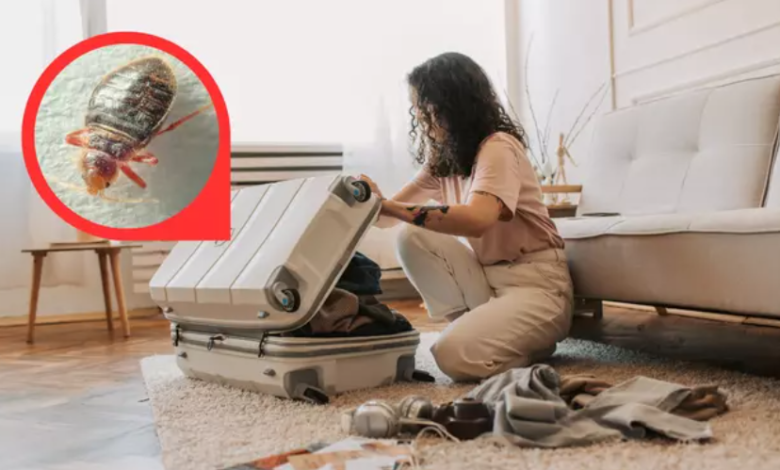Bedbug Control for Public Transportation

Introduction
Public transportation is an essential part of urban life, providing convenience and affordability for millions of commuters daily. However, the close proximity of passengers and high turnover rates make buses, trains, subways, and taxis potential hotspots for bedbug infestations. Bedbugs are small, parasitic insects that feed on human blood and can easily hitchhike on clothing, bags, and luggage. Once introduced into public transit systems, they can spread rapidly, causing discomfort, health concerns, and reputational damage to transportation providers.
Effective bedbug control ( væggelus bekæmpelse ) in public transportation requires a combination of preventive measures, regular inspections, and prompt treatment strategies. This article explores the challenges of bedbug infestations in transit systems, signs of bedbug presence, and best practices for prevention and eradication.
Why Public Transportation is Vulnerable to Bedbugs
Bedbugs thrive in environments where people frequently come and go, making public transportation an ideal breeding ground. Key factors contributing to their spread include:
- High Passenger Turnover – Thousands of people use public transport daily, increasing the chances of bedbugs being carried from infested homes, hotels, or other locations.
- Fabric-Covered Seats – Buses and trains often have upholstered seats, which provide hiding spots for bedbugs.
- Luggage and Personal Items – Bedbugs can cling to backpacks, purses, and suitcases, allowing them to move from one place to another.
- Limited Cleaning Opportunities – Unlike hotels or homes, public transit vehicles are not always deep-cleaned daily, allowing bedbugs to go unnoticed.
See also: How to Choose the Right Fence Style for Your Home’s Aesthetic
Signs of Bedbug Infestation in Public Transport
Early detection is crucial for preventing widespread infestations. Transportation staff and passengers should watch for the following signs:
- Live Bedbugs – Small, reddish-brown insects (about the size of an apple seed) hiding in seat seams, cracks, or crevices.
- Blood Stains – Tiny rust-colored spots on seats or walls from crushed bedbugs.
- Dark Fecal Spots – Small black or brown marks on fabric or hard surfaces.
- Musty Odor – A sweet, musty smell caused by bedbug pheromones in heavy infestations.
- Passenger Complaints – Reports of bites or sightings from commuters.
Preventive Measures for Bedbug Control
Proactive prevention is the best way to minimize bedbug risks in public transportation. Key strategies include:
1. Regular Inspections
- Conduct routine checks of seats, headrests, luggage racks, and carpeted areas.
- Use flashlights and magnifying glasses to spot eggs, nymphs, or adult bedbugs.
- Train cleaning staff and drivers to recognize early signs of infestation.
2. Frequent and Thorough Cleaning
- Vacuum seats, floors, and crevices daily to remove potential bedbugs and eggs.
- Steam-clean upholstered seats periodically, as high heat kills bedbugs at all life stages.
- Use mattress and fabric encasements to reduce hiding spots.
3. Passenger Awareness Campaigns
- Display posters and announcements advising passengers to check their belongings for bedbugs.
- Encourage commuters to report sightings immediately.
- Provide guidelines on how to avoid bringing bedbugs onto public transport.
4. Use of Bedbug-Resistant Materials
- Replace fabric-covered seats with smooth, easy-to-clean materials like vinyl or leather.
- Seal cracks and crevices in transit vehicles to eliminate hiding places.
Treatment Options for Infested Vehicles
If bedbugs are detected, immediate action is necessary to prevent further spread. Effective treatment methods include:
1. Heat Treatment
- Professional exterminators use industrial heaters to raise the temperature inside a bus or train to 120°F (49°C) or higher, killing bedbugs and eggs.
- Portable steamers can target specific infested areas.
2. Insecticide Application
- EPA-approved pesticides can be applied to cracks, seams, and other hiding spots.
- Non-residual sprays can be used for quick knockdown of visible bedbugs.
3. Freezing (Cryonite Treatment)
- Carbon dioxide snow or freezing agents can kill bedbugs on contact without chemicals.
4. Fumigation (For Severe Cases)
- Whole-vehicle fumigation may be necessary for large infestations, but requires professional handling.
Collaboration with Pest Control Professionals
Public transportation authorities should partner with licensed pest control companies specializing in bedbug management. Regular monitoring and integrated pest management (IPM) approaches can help maintain a bedbug-free environment.
What Passengers Can Do to Help
Commuters play a vital role in preventing bedbug spread. Tips for passengers include:
- Inspect Seats – Before sitting, check for signs of bedbugs.
- Keep Bags Elevated – Place luggage on racks rather than on seats or floors.
- Wash Clothing After Travel – High-heat drying kills any potential bedbugs.
- Report Suspicious Signs – Notify transit staff immediately if bedbugs are spotted.
Conclusion
Bedbug infestations in public transportation can be a significant nuisance, leading to health concerns and operational challenges. However, with proper prevention strategies, regular inspections, and prompt treatment, transit agencies can minimize risks and ensure a comfortable ride for passengers. By fostering collaboration between transportation providers, bedbug control ( væggelus bekæmpelse ) experts, and commuters, it is possible to maintain bedbug-free public transit systems.




